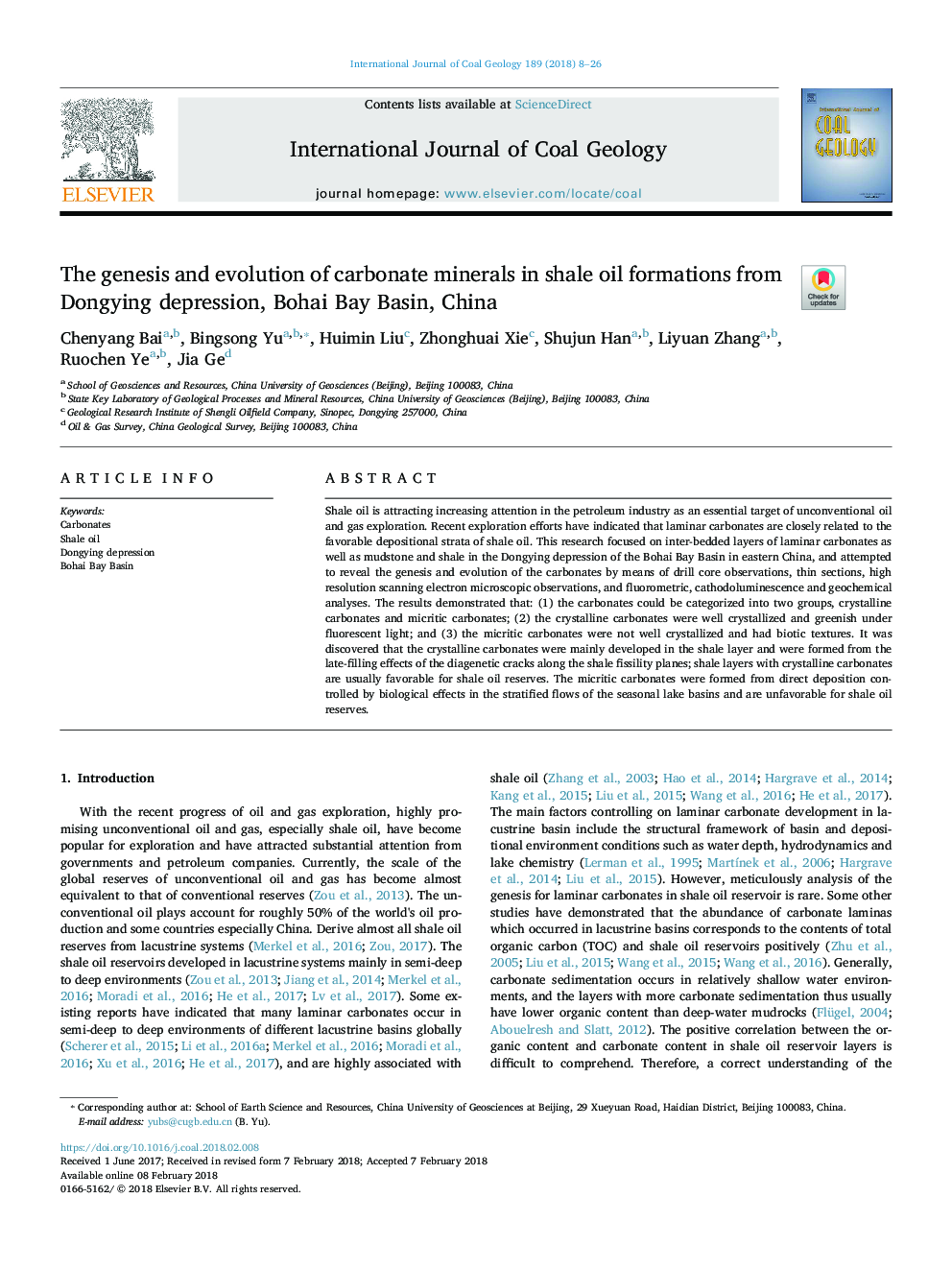| Article ID | Journal | Published Year | Pages | File Type |
|---|---|---|---|---|
| 8123470 | International Journal of Coal Geology | 2018 | 19 Pages |
Abstract
Shale oil is attracting increasing attention in the petroleum industry as an essential target of unconventional oil and gas exploration. Recent exploration efforts have indicated that laminar carbonates are closely related to the favorable depositional strata of shale oil. This research focused on inter-bedded layers of laminar carbonates as well as mudstone and shale in the Dongying depression of the Bohai Bay Basin in eastern China, and attempted to reveal the genesis and evolution of the carbonates by means of drill core observations, thin sections, high resolution scanning electron microscopic observations, and fluorometric, cathodoluminescence and geochemical analyses. The results demonstrated that: (1) the carbonates could be categorized into two groups, crystalline carbonates and micritic carbonates; (2) the crystalline carbonates were well crystallized and greenish under fluorescent light; and (3) the micritic carbonates were not well crystallized and had biotic textures. It was discovered that the crystalline carbonates were mainly developed in the shale layer and were formed from the late-filling effects of the diagenetic cracks along the shale fissility planes; shale layers with crystalline carbonates are usually favorable for shale oil reserves. The micritic carbonates were formed from direct deposition controlled by biological effects in the stratified flows of the seasonal lake basins and are unfavorable for shale oil reserves.
Related Topics
Physical Sciences and Engineering
Earth and Planetary Sciences
Economic Geology
Authors
Chenyang Bai, Bingsong Yu, Huimin Liu, Zhonghuai Xie, Shujun Han, Liyuan Zhang, Ruochen Ye, Jia Ge,
